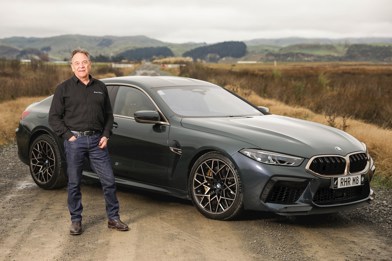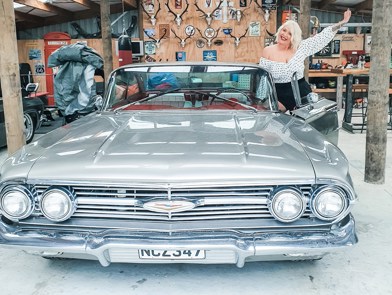In October, mullet-wearing beer-bellied petrol-heads all over Australasia will bow their heads to mourn the two-year anniversary of a day that we should’ve all probably seen coming.
The last Aussie-made V8 sports sedan to roll off the Holden production line was a bright red Holden Commodore SS — gazed upon with furrowed brows and the odd tear by everyone at GM-Holden’s Elizabeth plant, as it was shuffled down the production line.
The moment signified the end of large-scale Australian car manufacturing and the death of a string of vehicles many people considered as ‘ours’. But — as history tells us — it was anything but the end of Ford and General Motors rear-wheel drive V8 battle.
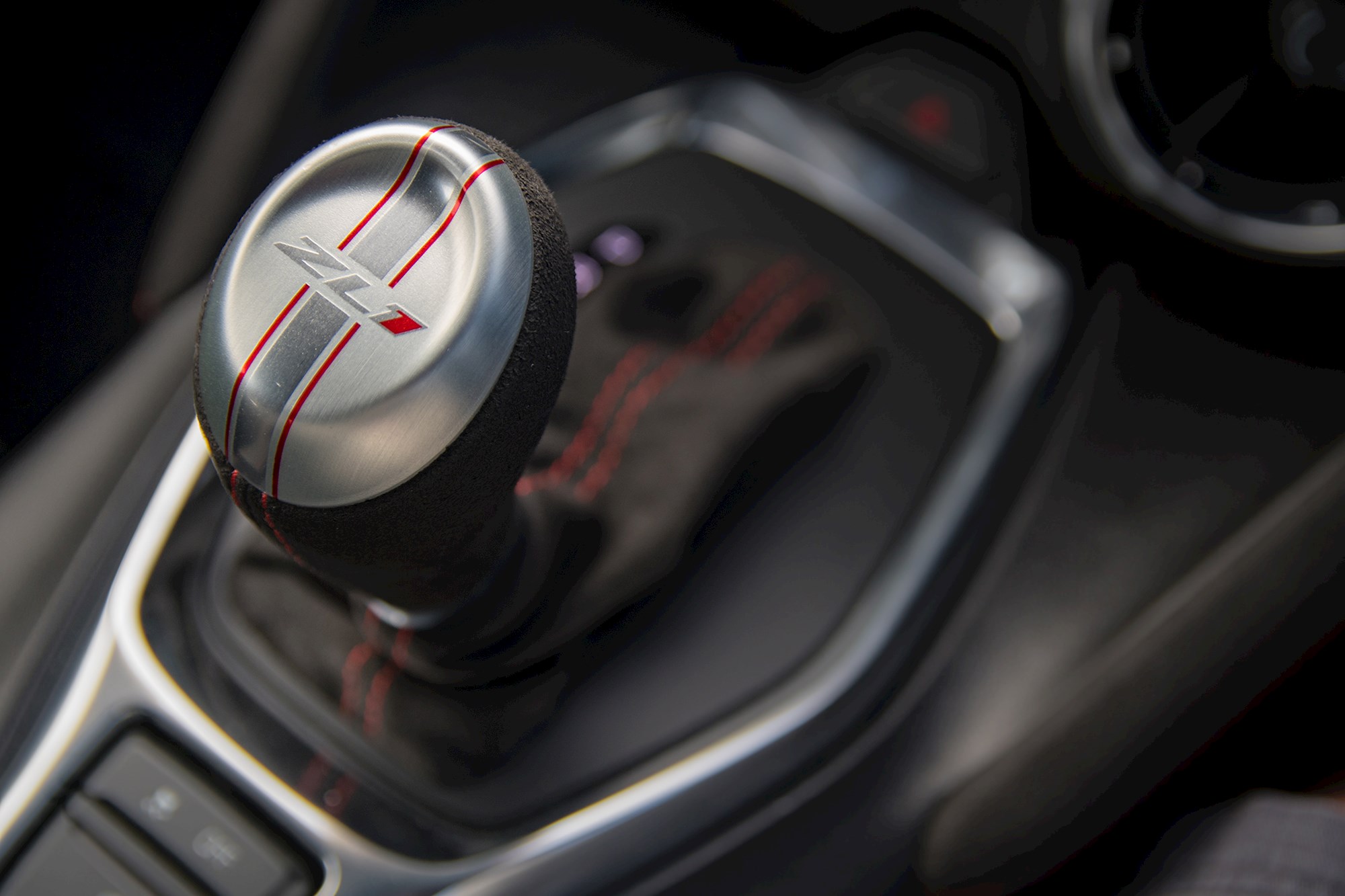
The Holden versus Ford war still rages on; although admittedly with the much more international theme of Camaro versus Mustang. And finally, with the fresh arrival of the Chevrolet Camaro ZL1, Kiwis are able to get a taste of America's uber-powerful 'super muscle' sub-segment.
But, before we get ahead of ourselves, there’s the thorny issue of price to tackle.
In the land of apple pie, the ZL1 starts at roughly $94,290. Here in Aotearoa however, that price skyrockets to $173,990 (our automatic-equipped tester was $175,990).
Most of this significant jump can be explained by the ZL1’s niche availability (less than 30 are set to come to New Zealand, and half are already sold) and the complexity of the right-hand drive conversion it gets at HSV’s Melbourne facility.
The other metric to consider is dollar-per-kilowatt. The ZL1’s supercharged 6.2-litre LT4 V8 (yep, the one out of the current Corvette Z06) hurls out a mammoth 477kW of power and 881Nm of torque. This means that while a Toyota Supra buyer is spending $400 per kilowatt, a ZL1 buyer is spending $365.
And that’s before you delve into the realm of sports and supercars like the Aston Martin Vantage, McLaren 600LT, and Mercedes-AMG GT. Each costs about twice the price of the ZL1, but produces less power.
Squint hard, and you can almost call the plucky American decent value for money. Although forgetting about that $118,990 530kW/827Nm Ford Mustang RTR Spec 3 we road tested last year is probably imperative to the theory.
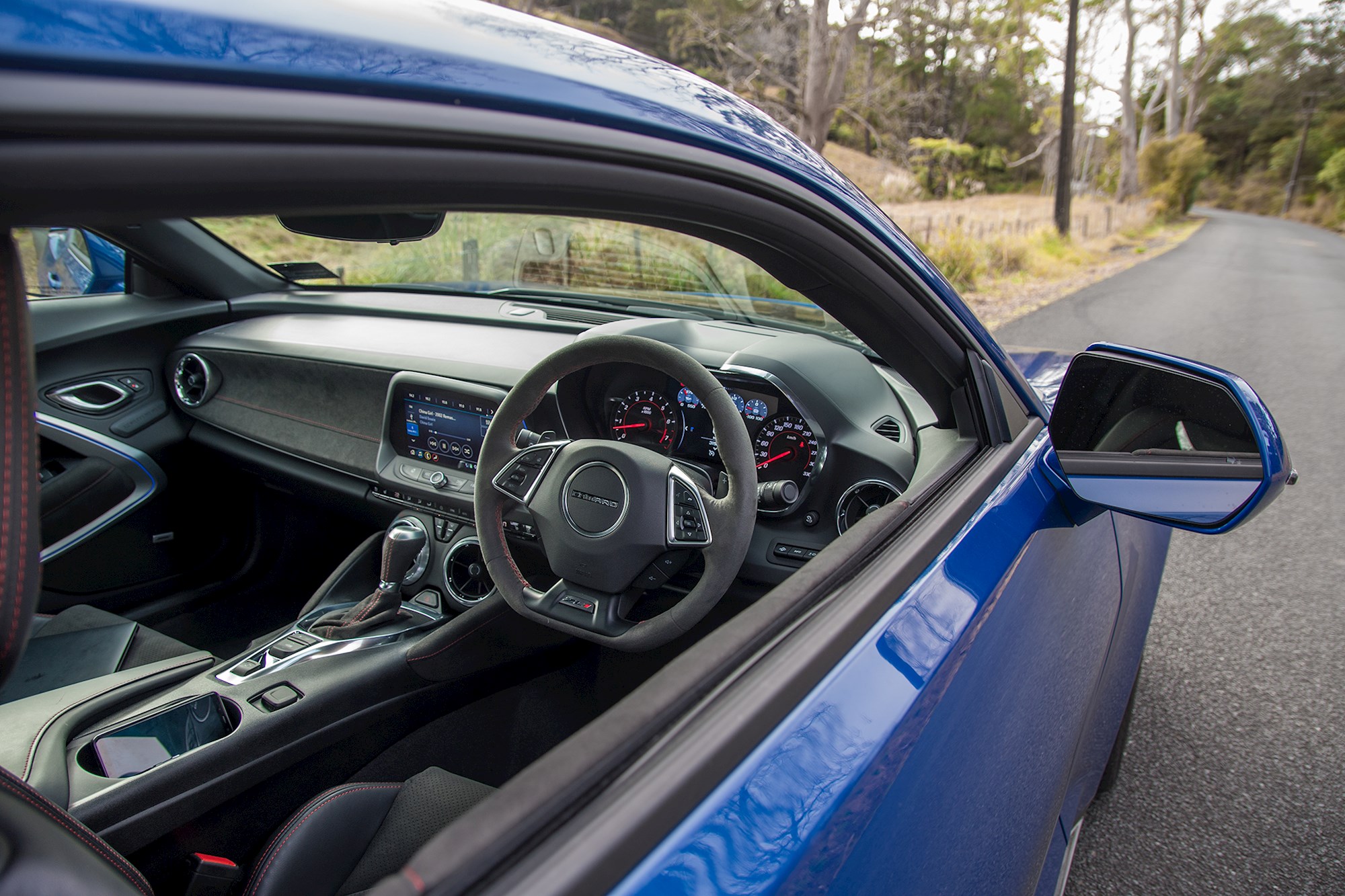
We touched on HSV's comprehensive right-hand drive conversion when we reviewed the Camaro 2SS last December. It's a full engine-out job. HSV's factory workers strip each car back to the B-pillar, flip over the wiring, bolt in over 300 right-hand drive specific parts including a locally produced dashboard, and then put back in most of what they took out.
It's a complicated system but one that appears to be working, with HSV cranking over its 1000th Camaro conversion last month.
The conversion itself is close to perfect. The lack of a right-hand drive centre console means that the 'PRNDL' panel next to the gearstick is obscured and the driver’s left elbow goes straight into the cup holders than onto an arm-rest. And, most amusingly, the Camaro's indicator chime bing-bongs from the left-hand side of the car.
But, these are minor things. At least the bonnet release is on the driver's side of the car, and the fit is exceptional.
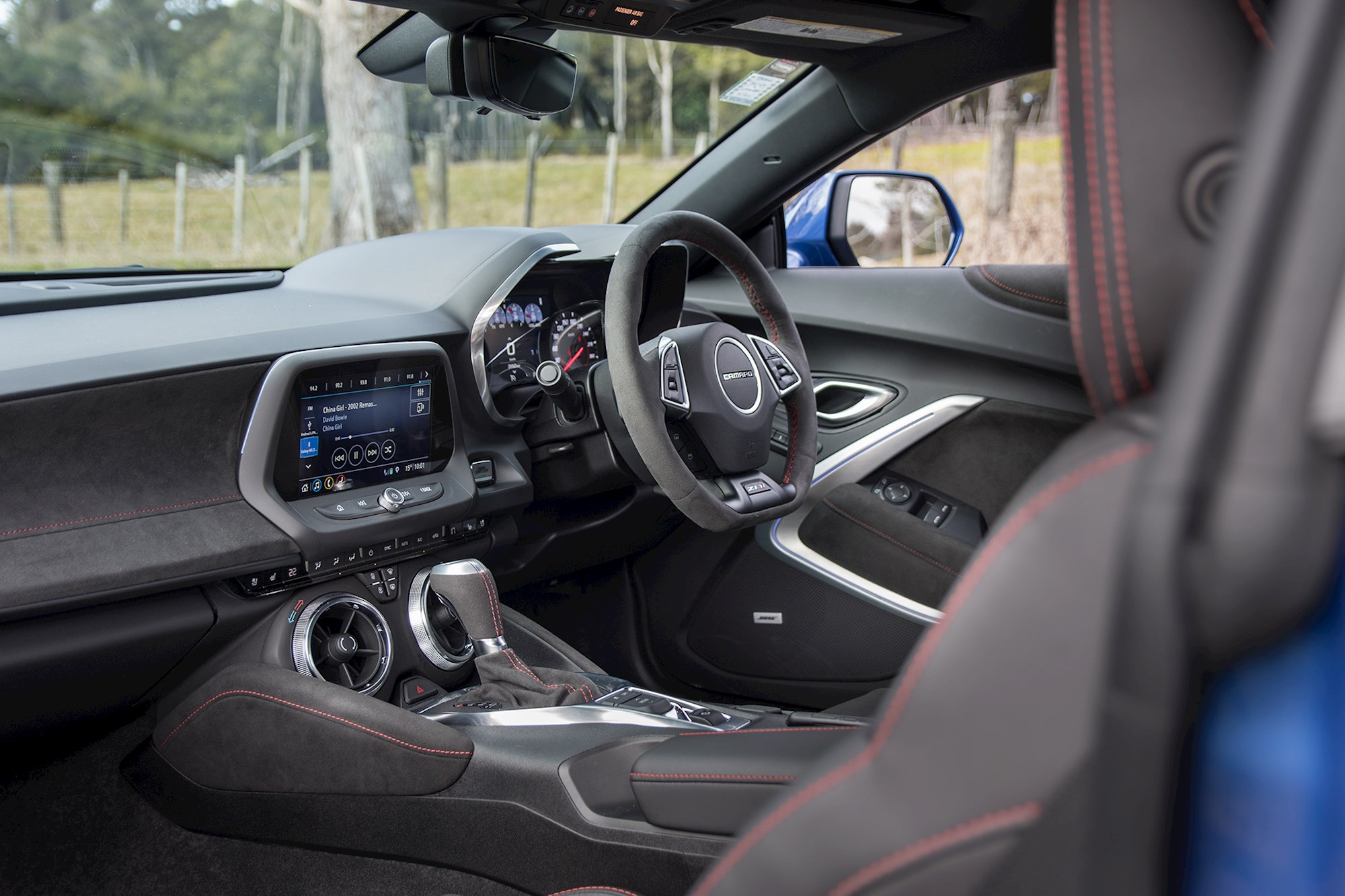
The quality of HSV’s conversion is unquestionable. However, the same can’t be said of the quality of the rest of the interior.
Next to the standard 2SS, the ZL1 gains a pair of leather-appointed Recaro bucket seats, a nifty additional rear camera adapted into the rear-view mirror, and suede inserts all over the doors and steering wheel.
But it’s less about what’s been added and more about what remains. The hard plastics on the dashboard, centre console, and doors are stretching things in a $100,000 car, and are an even bigger shame on something that costs almost twice that figure.
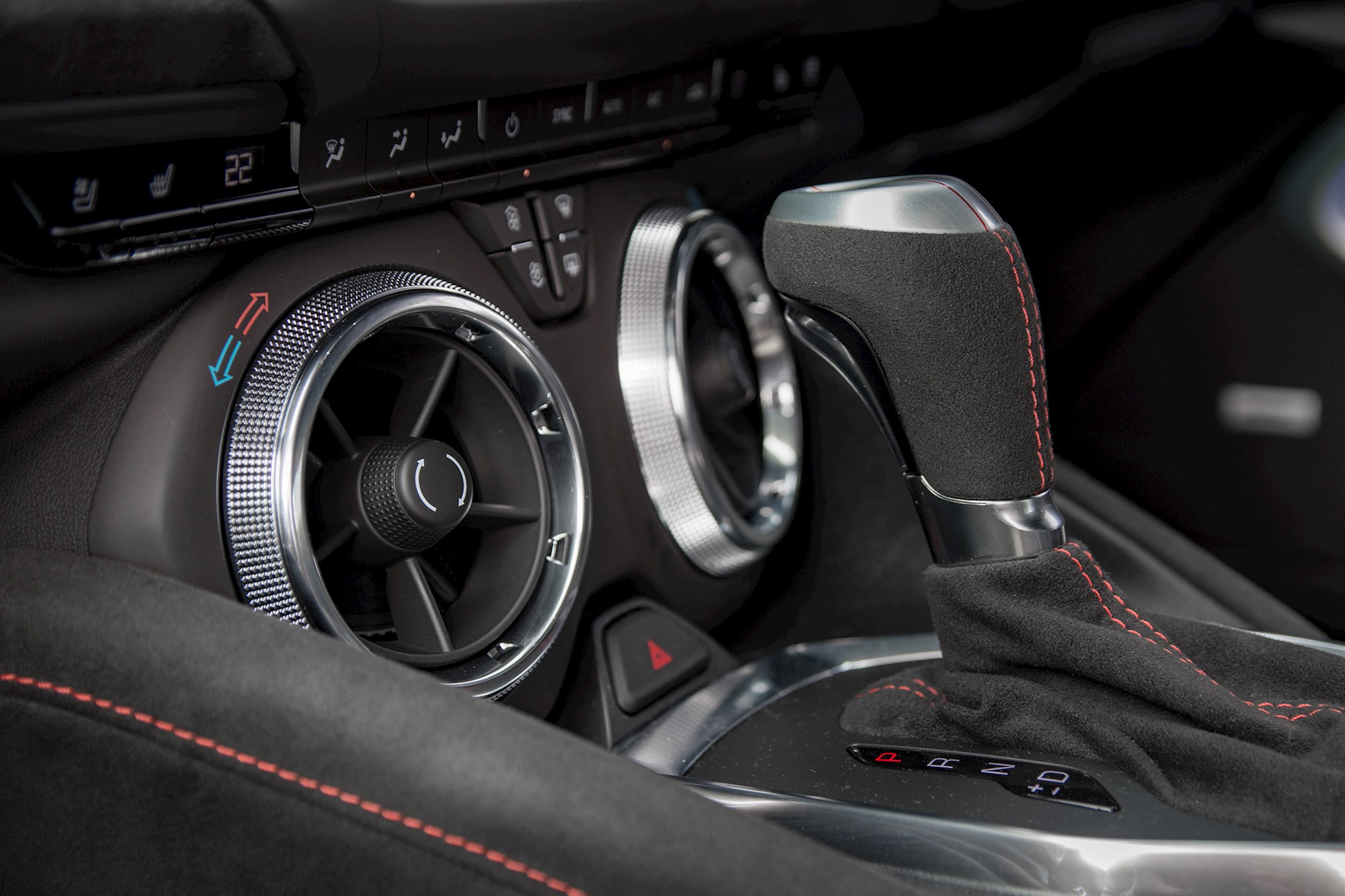
Satisfying touches like the Bose audio, the addictive giant metal dials that adjust aircon temperature, and the flurry of dials in the digital display are immediately undone by the nastiness of the air vents and the flimsy paddles on the back of the steering wheel.
It's roomy in some regards. The boot has a handy 257L of space (although the aperture is small and oddly shaped), and those in the front seats will be happy with headroom, legroom, and shoulder room.
Naturally, the back seats look to be a sick sadistic joke on first glance. However, I did manage to cram a couple of adults in there at one point — ironically legroom was "fine", with headroom being the biggest problem.
Nevertheless, anyone who's bench-marking one of these against something like a Mercedes-AMG C63 is likely to come away disappointed. But, equally, those able to overlook the low-rent cabin are in for a big treat.
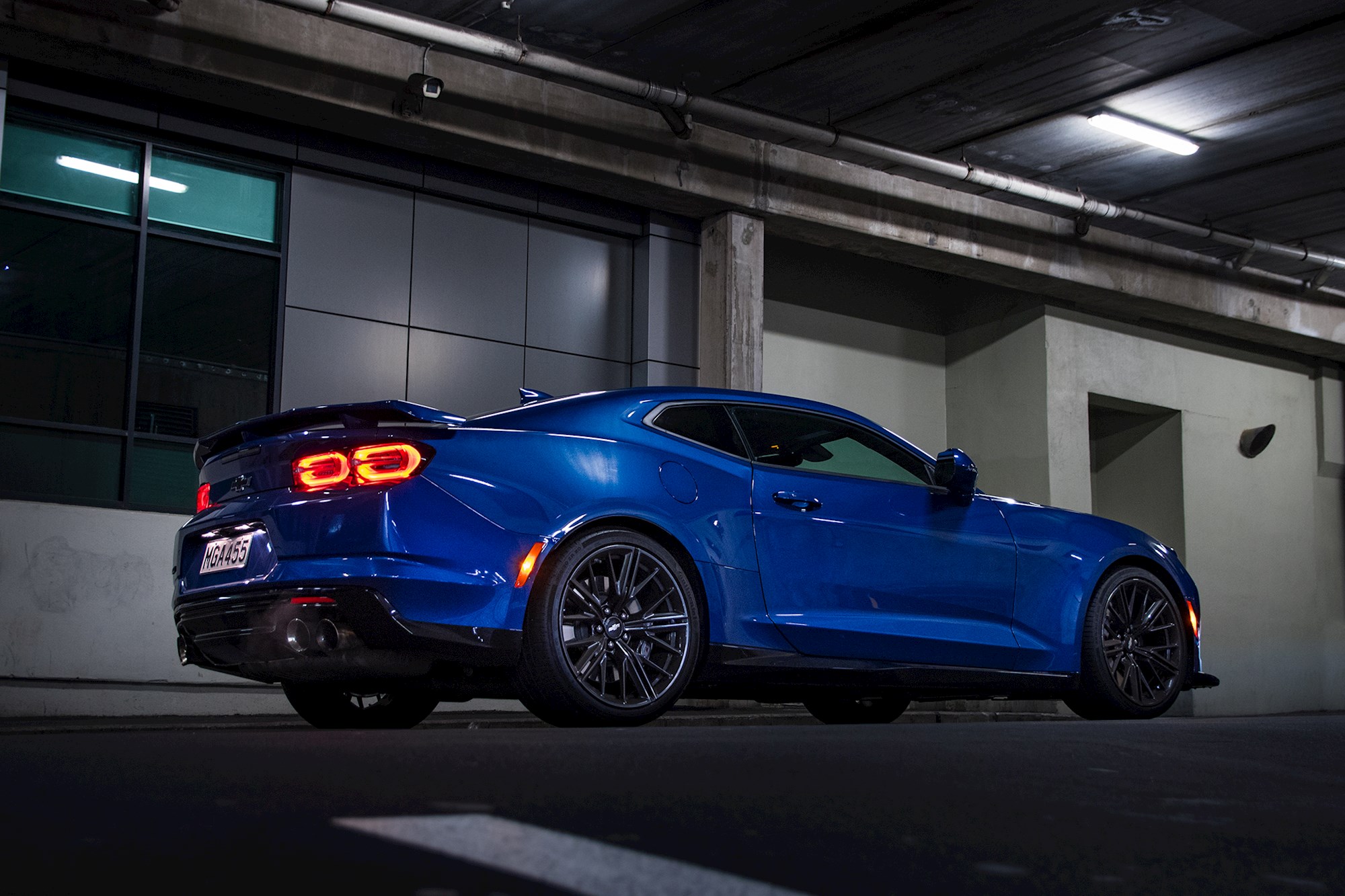
It has been a long time since I’ve driven a car that draws such a broad stroke in terms of its abilities. Contrary to other cars that feel compromised when they try to balance two hats at once, the Camaro ZL1 excels at each extreme end of the performance spectrum.
For starters, it’s comfortable and laid back in most situations. Those Recaro seats offer good shoulder room as mentioned earlier, but they also offer plenty of support. The huge chin spoiler has surprisingly decent clearance, making speed-bumps and kerbs a breeze to navigate. And the 10-speed automatic is accommodating at low speeds.
It’s based on the same 10-speed in the Ford Mustang (the two brands developed it together), only in this application it feels much less fussy about what gear it’s in. This makes for a far more predictable driving experience, no matter your speed.
Forget about fuel economy (at our best, we achieved 17.5L/100km), and it's actually quite a serene daily cruiser.
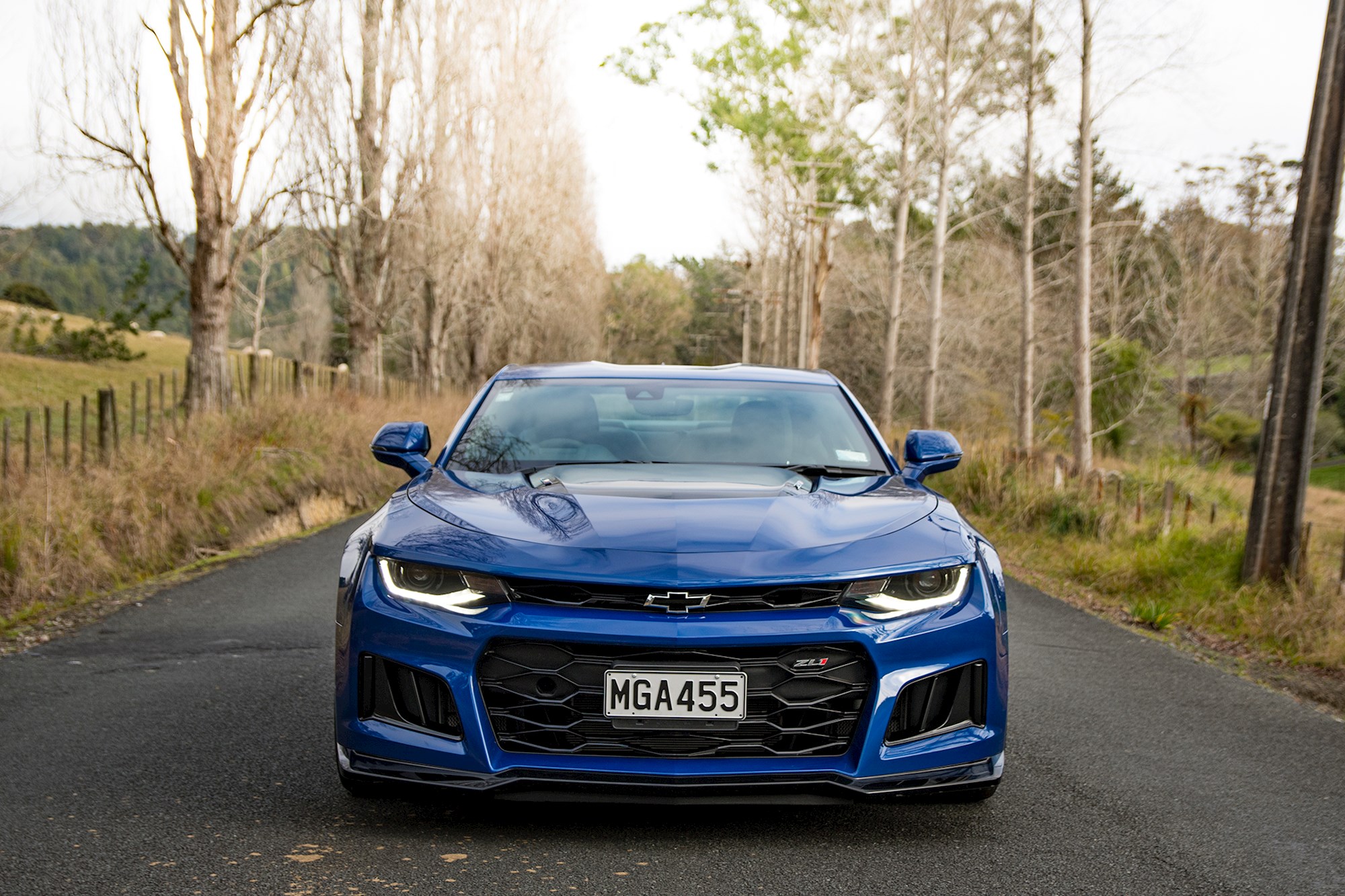
But, in fractions of a second, the ZL1 is more than happy to flip the switch from happy-go-lucky cruiser to axe murdering muscle car.
Hit the ZL1’s drive mode selector, and the change in character from ‘Tour’ to ‘Sport’ to ‘Track’ is among the most extreme I’ve ever come across. Switch from Tour to Sport, and a number of things happen. The bi-modal exhaust slips down an octave, the magnetic damping firms up, and steering gets noticeably heavier. Explore further into Track mode and the steering gets heavier still and the transmission sharpens significantly at high speeds.
So sharp is the transmission in Track mode that it makes the car borderline undriveable in average traffic This being the same transmission that I praised for being a total wallflower in Tour mode. That's proper versatility for you.
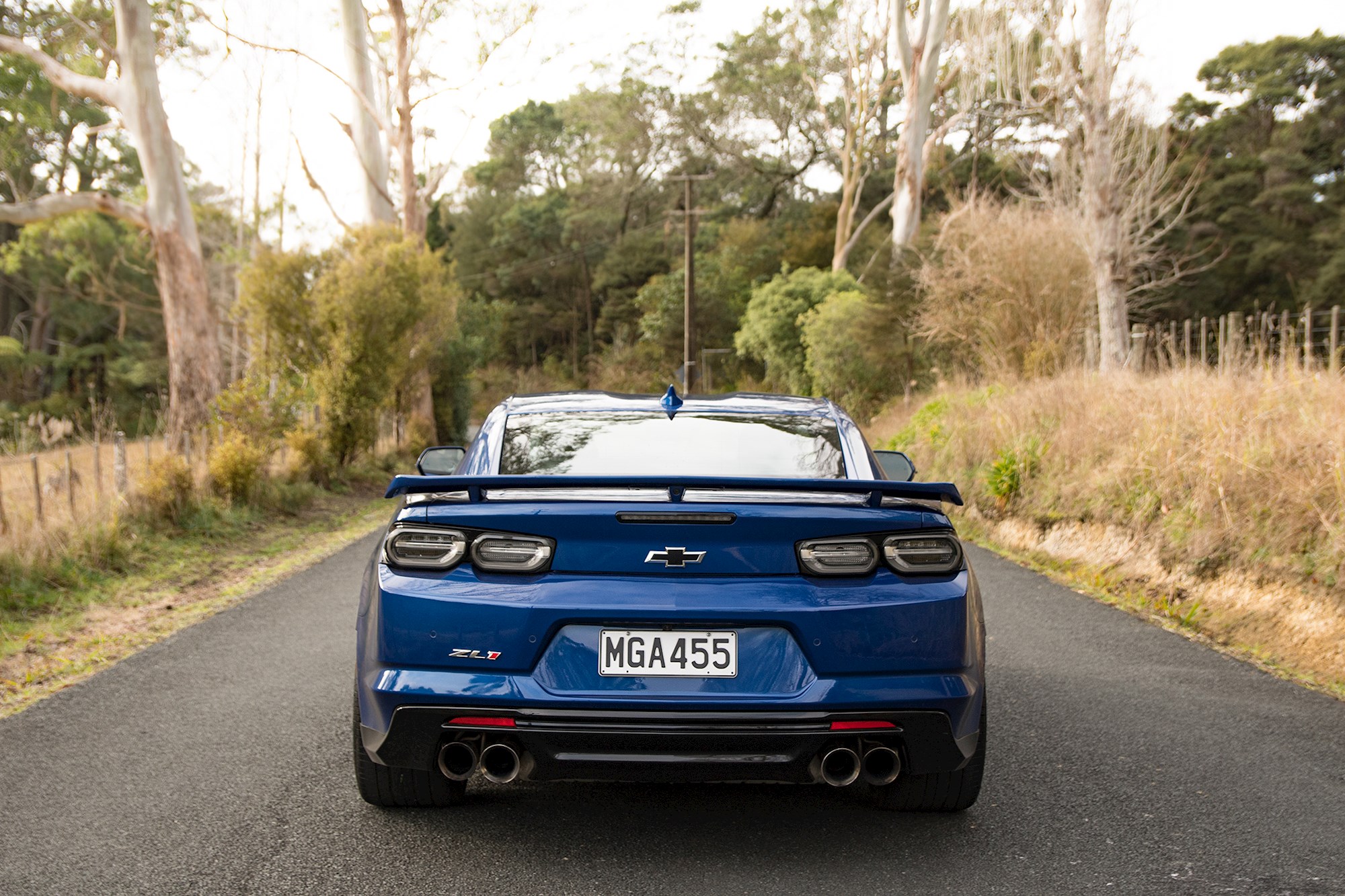
When shown a corner, the standard Camaro is arguably the most capable of the American pony cars. This only gets better with the ZL1.
The key differences between it and the 2SS are the addition an electronic limited-slip diff, 6-piston Brembos up front, and the aforementioned magnetic damping. These things all layer confidence on the driver — particularly on corner entry and through mid-corner rotation — while complimenting a chassis that feels more balanced than any of the pony-badged rivals.
Steering remains relatively numb but is hardly what you'd call disconnected. The amount of weight helps counter the lack of feel, and at the end of the day it still allows the driver to be extremely precise with inputs (something that's worth it's weight in gold when you're lobbing a car that's so damn wide down a narrow West Auckland back-road).
Where things get hairy is in the Camaro’s attempts to tame that power.
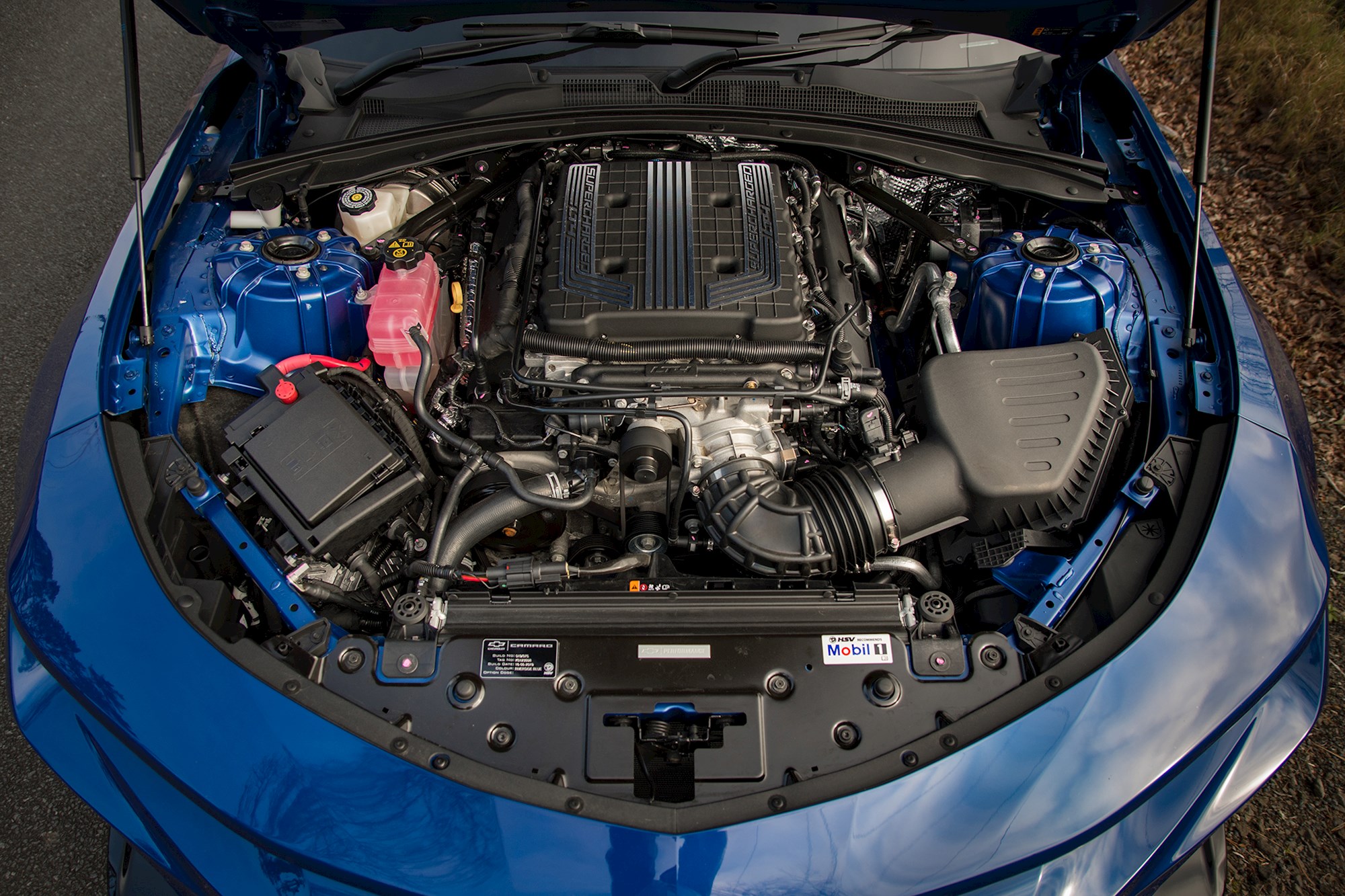
From the factory in America, the ZL1 comes shod with a set of gummy Goodyear Eagle F1 Supercar 3 tyres. They're an incredible, track-focused tyre. Or … at least that’s what I’ve read about them.
Unfortunately we don’t get them in Australasia, thanks to the Australian Design Rules (or, the ADR) — Australia’s national standards body when it comes to vehicle safety. The hypo tyres failed the ADR’s brake testing procedures, which resulted in HSV having to fit the ZL1 with Continental ContiSportContact 5P tyres instead — a familiar compound for those who have driven HSVs in the past.
It's part of what must be a bit of a love-hate relationship between HSV and the ADR. The organisation also clipped the Camaro's wings in terms of noise. Australian and New Zealand ZL1s meet a 75db noise limit, thanks to the addition of two additional mufflers in the automatic and four in the manual.
It still sounds like thunderous applause from the heavens when it's singing proud in the higher rpms, but down low the Bowtie's engine note is a little flat.
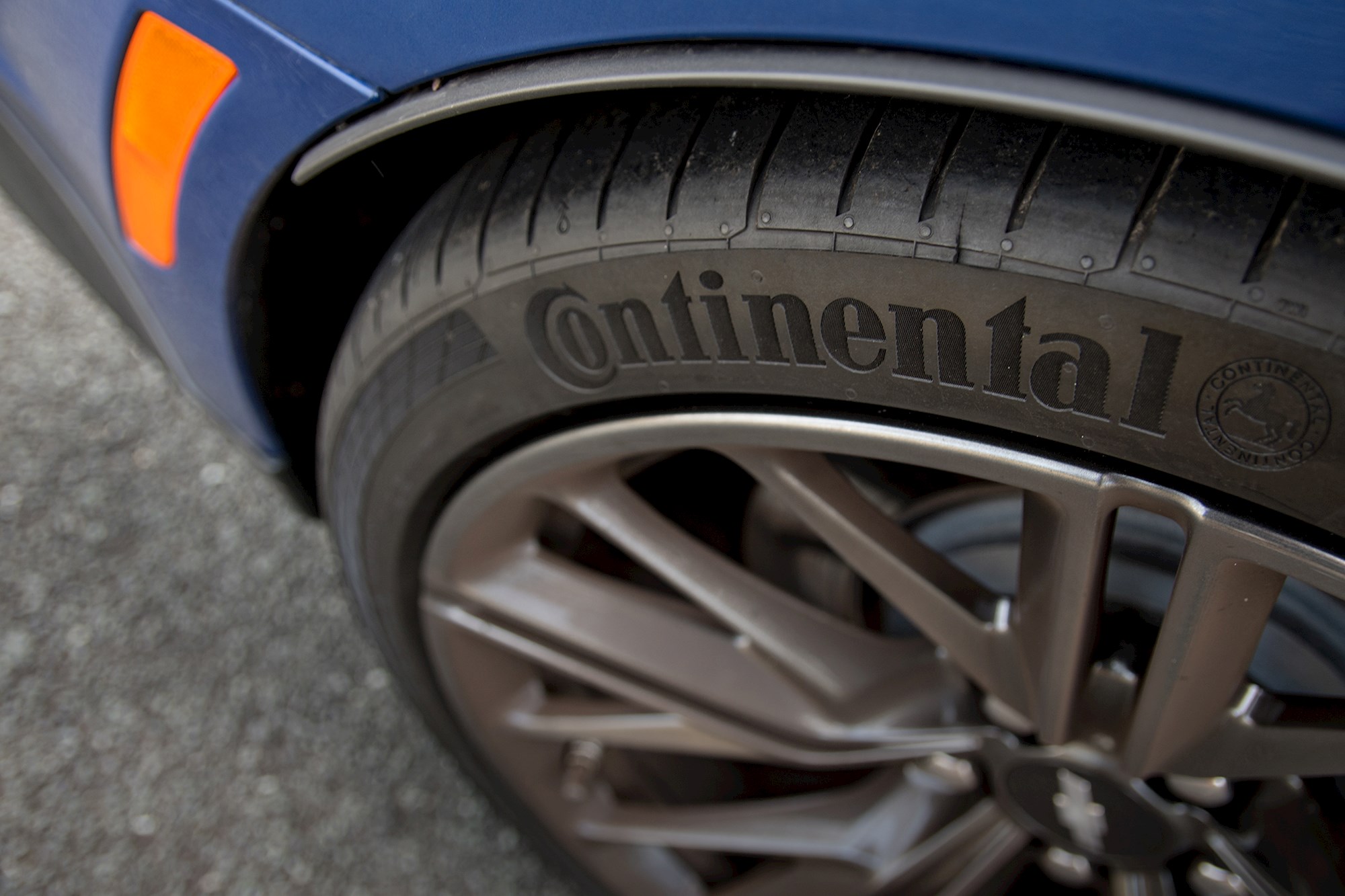
In most cases the Continentals are a fine tyre. Mid-corner grip is commendable and road roar acceptable. But, when it comes to helping the ZL1 put its mountain of power and torque to the road they do struggle.
Whether it’s wet or dry, whether you’re in Tour or Track — the ZL1 struggles to put its power down with the harder tyre compound. They take their time in conducting temperature, and effectively render Chevrolet's claimed 0–100km/h time of four seconds as a pipe dream.
That's unless you get to keep the original Goodyears, which HSV New Zealand hopes to offer to local ZL1 buyers for track-use purposes.
Until the ZL1 is fitted with those tyres though, it remains a wheel-spinning, tail-snapping monster.
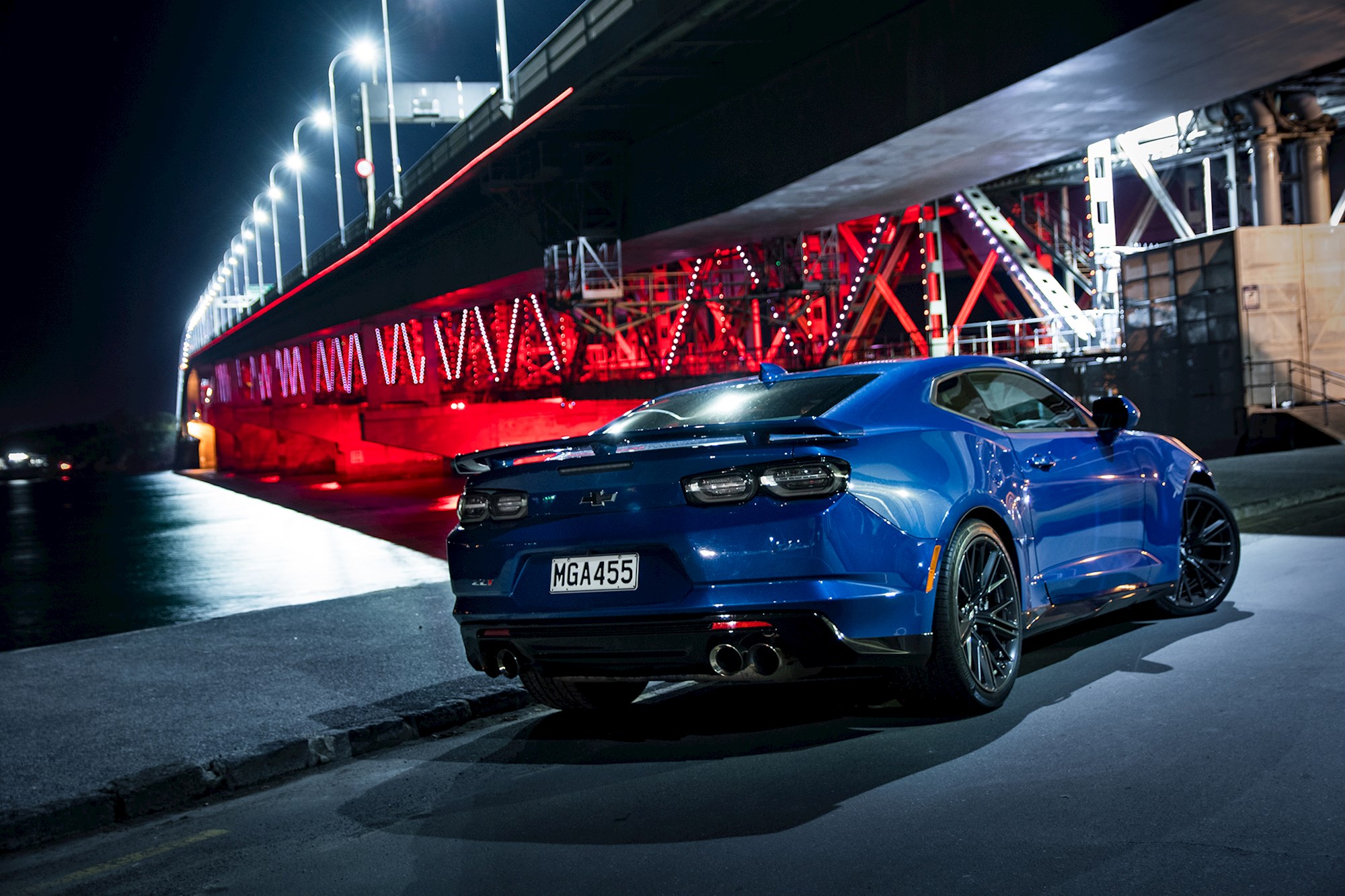
And, you know what, that's not a deal breaker. It sounds like the sort of thing that would eventually prompt nightmares, but the Camaro’s lack of rear grip somehow manages to never feel like an arm-wrestle.
The eLSD and traction control is reasonably capable of tucking in corner-exit oversteer, and the presence of a fine chassis and tight steering back the driver into accepting their role in the madness as the supercharger whines and the tyres squeal.
On a 10-year-old Camaro chassis, dealing with that 477kW on these tyres might be frightening. But on the current chassis — one lauded worldwide for its handling chops — it’s somehow just normal. It’s just part of the ride.
Really, that’s part of what separates the Camaro from just about every other car in this story. The driving experience it serves up is entirely its own; an equal measure of cool and chaotic.
And, if you park it next to a C63 ... nobody’s going to look at the Mercedes twice.
2019 Chevrolet Camaro ZL1
Price: $173,990 (manual), $175,990 (automatic)
Pros: Monumental power, usability, hunky looks
Cons: Rear grip, cheap interior, expensive




























